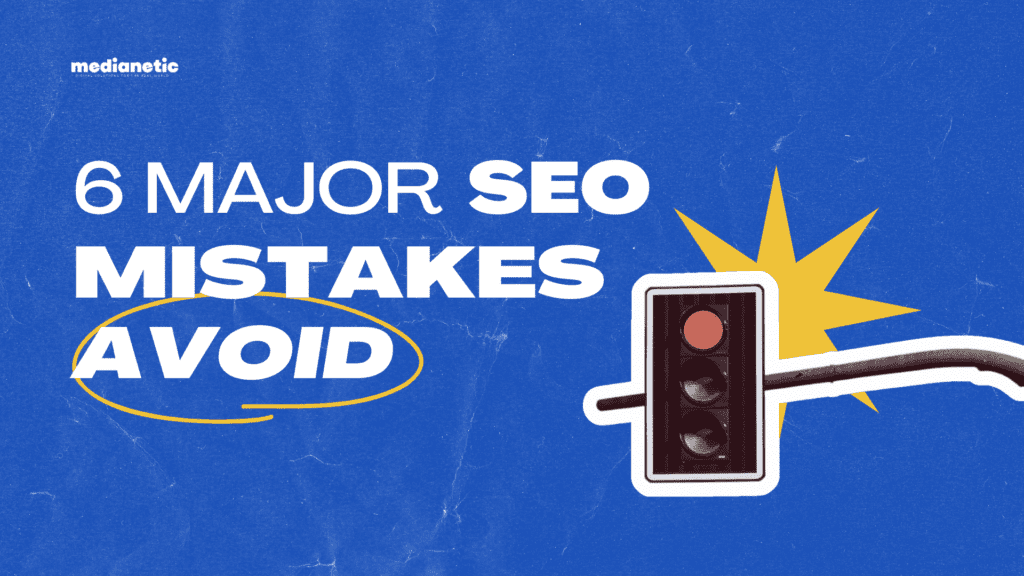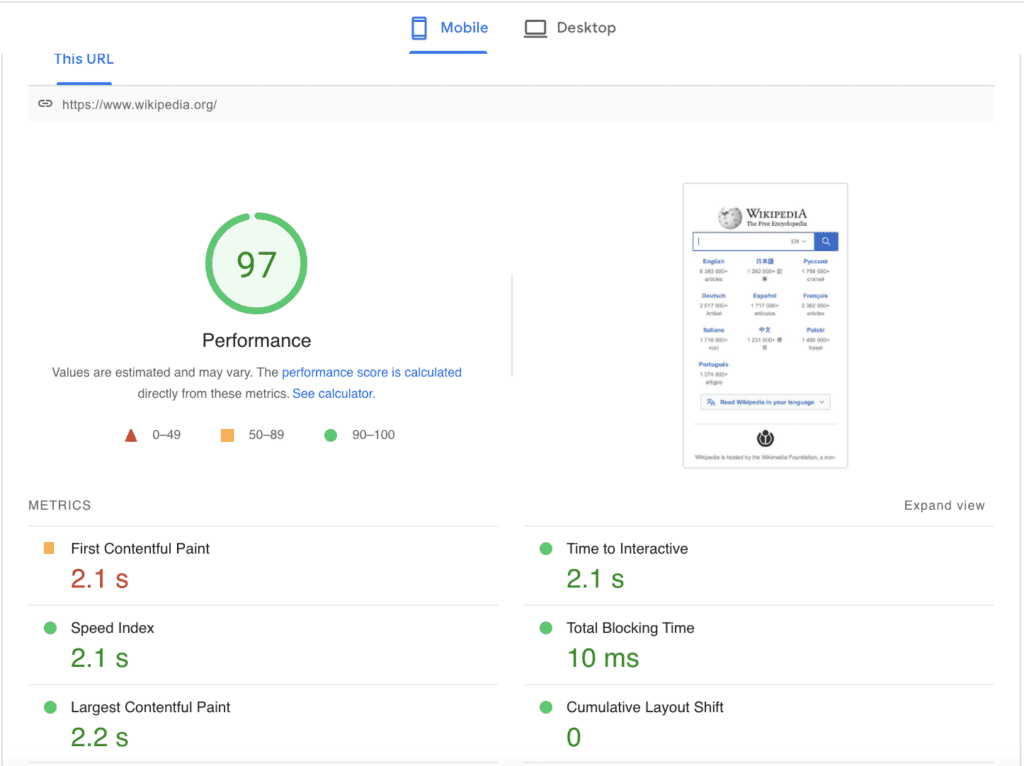6 Major SEO Mistakes and How To Avoid Them






Have you experienced low search engine rankings for your focus keywords? If so, it could be because of some common SEO mistakes. Before you throw in the towel, know that you are not alone! These challenges are often faced by both small business owners and the big corporations alike. However, by being aware of these potential SEO mistakes, you can up your chances of ranking higher on popular search engines.
In this article, you’ll find out which major SEO mistakes you’re making and how you can avoid them.
Amongst SEO experts, page speed is a known Google ranking factor. This means that the faster your site is, the more Google will favor it.
One of the ways you can put your site to the test is with page speed testing tools like PageSpeed Insights and GTMetrix. These tools help you analyze your site’s performance, while also providing you with suggestions on where to improve your page speed.


Pro tip: Another quick way to fix this issue is to optimize your media files. Large files often require more time to load, which makes your website slower than it needs to be. Hence, resizing your images can be a real load-time saver. The best part? If you have a WordPress site, you can do this easily by installing a plugin like Smush to do it for you. On the same note, we also recommend reviewing the plugins that you have activated. The fewer the plugins that are activated, the faster your WordPress site can be loaded.
Targeting the wrong keywords is like expecting your visitors to find a needle in a haystack. If you want to rank on search engine results pages (SERPs), you have to use the right keywords. Sometimes we might opt for keywords that are too generic or infeasible. Some keywords are so desirable that every website in their relevant niches wants to rank for those keywords. The landscape is highly competitive, which means you’ll need more resources.
Hence, the best way is to come up with more specific keywords, such as long tail keywords. These help your website rank better for those keywords, as the search volume for this keyword tends to be lower. We suggest optimizing your webpages to contain different long tail keywords, as this approach will help you gain more traffic for all of these keywords combined.
The most common mistake one can make is by thinking they can simply rank for a keyword without considering the competition. Our advice? Start by prioritizing less competitive keywords and aiming to rank with your skills and resources instead, then gradually build up to the competitive keywords from there.
What happens when people enter a search query? They expect to find an answer in the form of a rich answer, featured snippets, or other content blocks, right?
Well, metadata is what helps your website appear for certain queries on SERPs. This includes the title of your page (or post) and its meta description. Both are important for SEO, so you should optimize it well for each page. Since this is an important ranking factor, the page title should include the keyword and be kept short because if it’s too long it will get cut off. You don’t want people to miss out on your page title in the search results.
Meta descriptions, in essence, heavily contribute to your click through rate (CTR), which could lead to an increase in traffic. This is because they make up a significant portion of content displayed in search engine results.
When you look at a search result, you’ll typically see a URL—helpfully highlighted in blue—with a snippet of text below, which provides some context of the page’s content. That’s where your meta descriptions can shine through. When written well, it can drive action and conversions for your site.
Plus, when you don’t have a meta description, Google will decide what to put in its place. In the example below, you can see that it provides no incentive for users to click.


Bad example of meta description.
Here are a few meta descriptions best practices to implement:
Once you have visitors on your site, the next step is to keep them on it. You don’t want them to immediately bounce back to Google once they have read something on your page. This will only increase your site’s bounce rate and bring down its overall ranking performance.
The solution is to encourage visitors to click through your site. One of the ways to do this is by using strong call-to-actions (CTAs). These are typically buttons on your site that offer an action to your visitor, like a prompt to “sign up” to your newsletter or “buy” button on a product page.
Alternatively, you can add relevant internal links to other pages on your site. This is great for keeping bounce rates low and for improving your overall SEO. Internal links help let search engines know what pages are related to each other, and what content that might serve their search users’ intent on a certain topic.
Build your internal links to create a great site structure that keeps people on your website!
Of course, it goes without saying that the quality of your content matters in SEO. It’s important that every aspect of your website has stellar content with at least 300 words long. Search engines require copy from web pages to deliver the best possible content to their search users. If you lack an awesome copy, Google’s not going to take you seriously as an expert on a certain topic.
Search engines organize the content based on their order of usefulness and relevance to the users performing the search; that’s how content and SEO come into play. Therefore, the content that you offer has to be of value to search engines and your users, in order to maximize the potential of your content’s SEO.
Pro tip: Writing quality content such as firsthand or original content will demonstrate your expertise. In addition, it’s also best practice to avoid stuffing keywords into your copy as that won’t win you any favors from your audience or Google.
I’m sure you’ve seen generic text for links on web pages such as “click here”, “read more”, or “this post”. In SEO best practices, anchor texts are one of the most important components. So you want to use your call-to-action effectively and still give appropriate context to the search user. For example, if you want to direct site visitors to your other blog post, you can write “click here to learn more about [blog topic]”.
Pro tip: Change up the anchor text for your links. You can use variations on the keyword or phrase as repetitive ones won’t look natural to both your visitors and search engines.
Although SEO requires constant updates, there are plenty of little ways that can improve your visibility. Otherwise, these mistakes will cost you your rankings and hold your website back from reaching its full potential.
Make it a habit to look after your SEO because a little attention to detail can go a long way. Remember to use this checklist to avoid the major SEO mistakes and you’ll be rewarded with the kind of search visibility and user engagement that meets your business’ bottom line.
Are you looking to boost your website’s visibility? We’re here to help. Get in touch with us at hello@medianetic.me, or drop us a message via our chatbot below! We look forward to partnering with you.


Medianetic Sdn Bhd
200301016995 (619415-K)
No. 59, 2nd Floor, Block E, Zenith Corporate Park, Jalan SS7/26 Kelana Jaya, 47301 Petaling Jaya, Selangor
hello@medianetic.me
+603 7960 3088 (Office)
Medianetic Sdn Bhd © 2023
Made by Medianetic